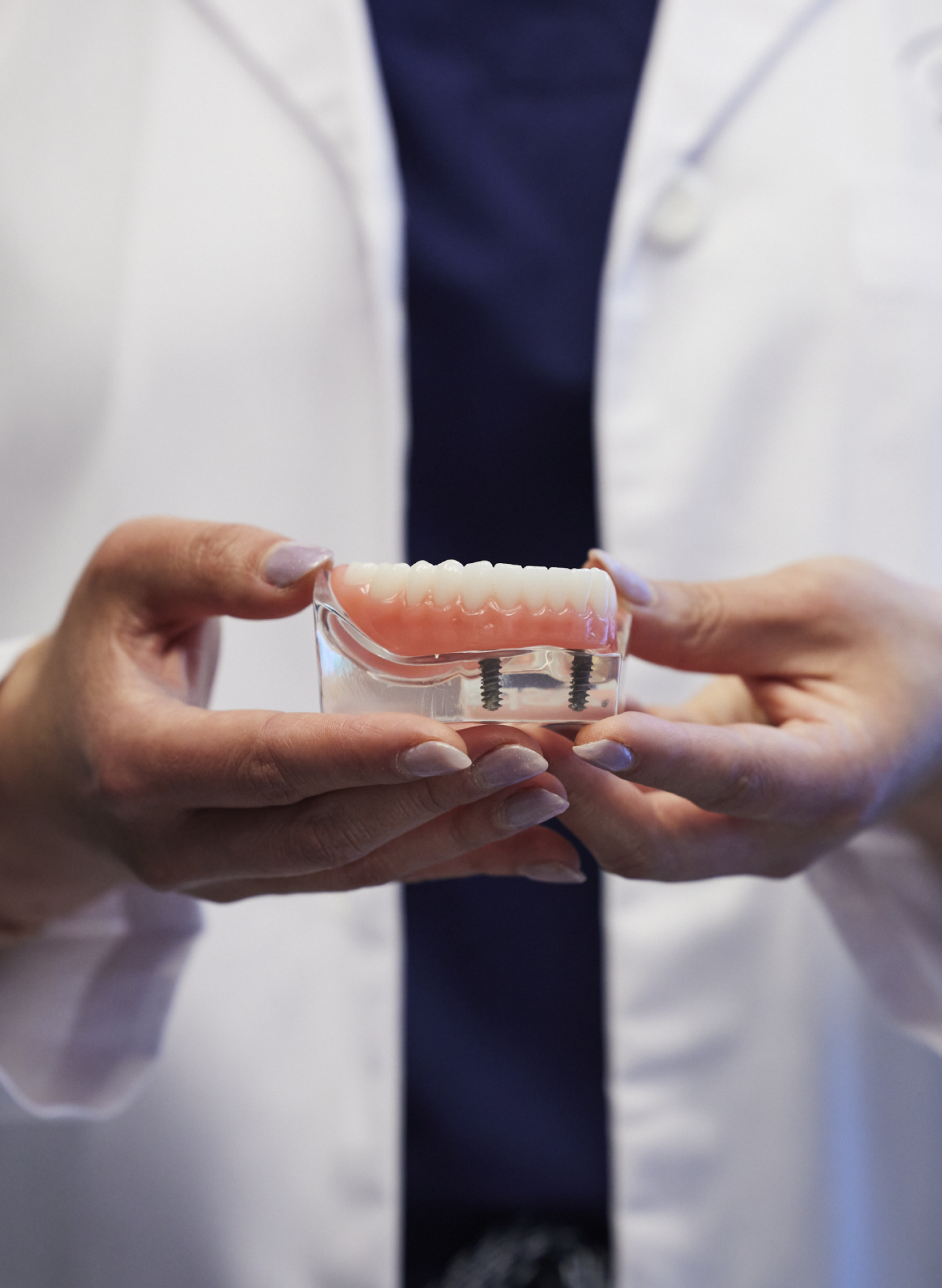Last updated 05.28.2025
What are dental implants made of?
This article will explain the components of dental implants and the dental implant treatment materials at ClearChoice.

You want to be sure your dental implant provider has the right stuff; both the materials, and the knowledge on how to use them.
Luckily, ClearChoice Dental Implant Centers have both. At the forefront of implant dentistry, ClearChoice prosthodontists are experts in dental implant restorations, the leading tooth replacement solution. From single dental implants to full mouth restorations, dental implant treatment proves a permanent, secure alternative to traditional tooth replacement treatment options.
In this blog, we'll explain what dental implants and implant restorations are made of, break down their essential components and benefits, and explore how they can transform your smile and quality of life.

What are the different parts of a dental implant?
Too often online, the term 'dental implant' is used without the reader knowing if the authors mean to describe only the dental implant or also mean to describe the dental implant restoration. For a patient to have a final, functional tooth replacement, there must be a dental implant in the bone and the various restoration components attached to the implant that will create the tooth. If a patient has an “implant restoration”, then all the procedures to create that restoration have been performed. This includes the surgical placement of the implant, the specially designed attachments, and finally the prosthetic tooth.
Each of the below elements of the implant restoration work together to mimic the look, feel, and function of natural teeth:
The implant
This is a small screw about the size of a tooth root made of biocompatible titanium. The titanium implant is surgically placed into the jawbone and once it heals to the bone, the implant provides a stable foundation for your replacement tooth.

The abutment
The abutment is a vital connector piece that attaches to the implant and then the tooth attaches to the abutment. The abutment extends above the gumline and allows a secure attachment between the implant and the prosthetic teeth.

The crown or bridge
The crown is the visible part of the restoration, designed to resemble a natural tooth. It is custom made for each patient; each crown is created to match the color, shape, and size of existing teeth. If a long span of several prosthetic teeth (an implant bridge) is needed, then a patient will have multiple implants and abutments all connected together by the bridge. There is a seamless and natural appearance to the completed restoration.

Dental implant abutment materials
Abutments are often made from titanium alloys, gold, or zirconia. At ClearChoice, we most often use titanium abutments for their durability and strength.
Abutments can be made from various materials, each chosen based on specific requirements for durability, strength, and aesthetic appeal:

Titanium
The most commonly used material, titanium is known for its strength, biocompatibility, and ability to be highly polished and smooth to soft tissues. Aesthetics: Implants may give you a more natural look if the tooth is more severely damaged or decayed.
Zirconia
Zirconia abutments can be used in specific clinical situations; they have an aesthetic advantage and can replicate a natural tooth color. However, they are not as strong as titanium and have a risk of fracturing where they attach to the implant.
Ultimately, the choice of abutment type and material depends on each patient's anatomy, aesthetic preferences, and budget. Our experienced team at ClearChoice can help guide you in selecting the best abutment option for your specific needs.
Dental implant crown materials
As the artificial teeth that complete the restoration, dental crowns can be made of a number of different materials. There is no clear winner of implant crown or bridge materials, as each has specific indications suited to the patient.

Porcelain fused to metal (PFM)
PFM crowns combine a metal base with a porcelain overlay for a natural and durable appearance. They are strong and long-lasting, making them a popular choice for both molars and teeth that are visible when you smile.
Zirconia
Zirconia crowns are highly durable, resistant to wear, and provide an incredibly lifelike appearance. They are an ideal option for individuals seeking both strength and aesthetics in their dental restorations.
Acrylic/composite resin
These crowns are mostly used as economic temporary restorations while the final implant crown or bridge is being made.
Contact ClearChoice doctors to learn what material is best for you
Curious what materials may be the best fit for your unique needs and budget? Contact your nearest ClearChoice Dental Implant Center for your free consultation. We've got what it takes to transform your smile.
Dental implant material FAQs
What are the advantages of using titanium dental implants?
Titanium dental implants are highly durable, lightweight, and osteointegrative, meaning they bond naturally with the jawbone for long-term stability and support. They are also resistant to corrosion and ideal for most patients.
Are dental implant restoration materials safe?
Yes, dental implant materials such as titanium and zirconia are extensively tested for safety and biocompatibility. They are designed to minimize the risk of allergic reactions or adverse effects
in patients.
Are dental implants biocompatible?
Both titanium and zirconia are biocompatible, allowing them to integrate seamlessly into the jawbone without being rejected by the body. This promotes a secure foundation for long-lasting dental restorations while maintaining oral health.
Schedule Free Consultation>



